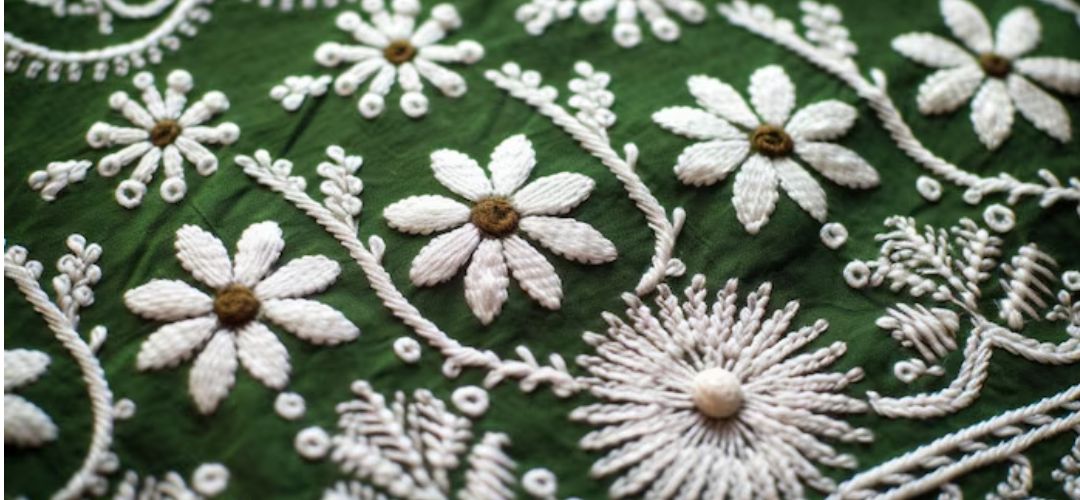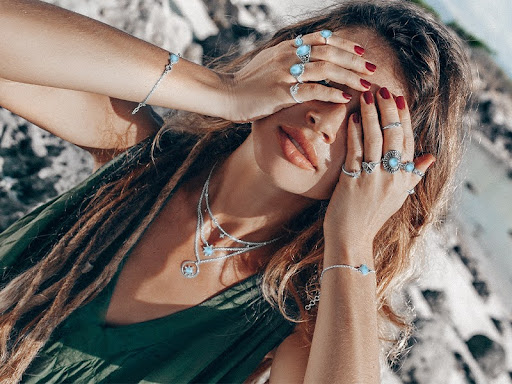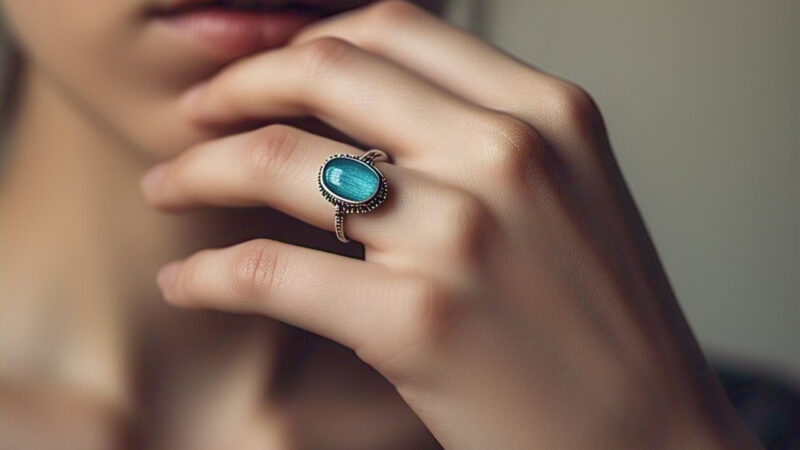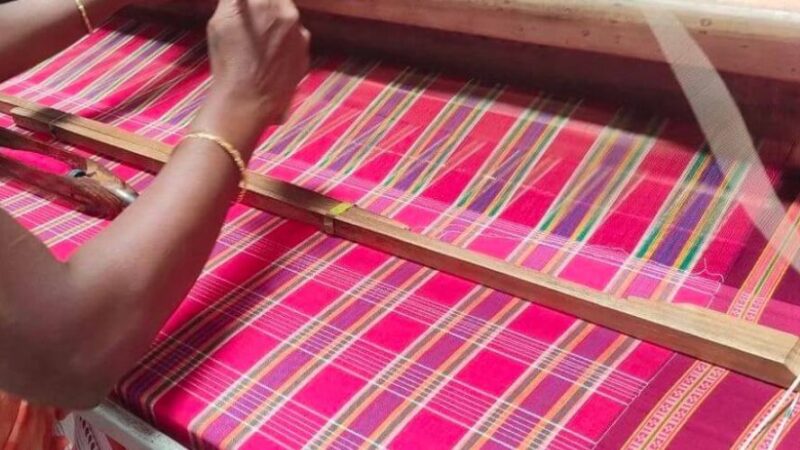Threads of Time: Unraveling the Rich History of Chikankari Embroidery

Among India’s diverse textile traditions, Chikankari stands out as an embodiment of elegance, precision, and cultural depth. Often referred to as the art of “white embroidery,” Chikankari is more than just a needlework technique—it’s a story etched in thread, whispering tales from the courts of Mughal emperors to the vibrant lanes of modern Lucknow. This blog delves into the fascinating chikankari history, tracing its royal origins, evolution, and timeless appeal.
The Mughal Origins: A Stitch in Royalty
The roots of Chikankari can be traced back to the Mughal era, with several historical references attributing its introduction to the legendary Mughal empress Nur Jahan, wife of Emperor Jahangir. Known for her patronage of the arts and refined taste, Nur Jahan is believed to have brought Persian embroidery techniques to India in the 16th century.
The term “Chikan” is derived from the Persian word “chikeen” or “chakin,” which loosely translates to intricate embroidery. It began as white-on-white embroidery on fine muslin and mulmul fabrics, specifically curated for the hot and humid climate of North India. These delicate pieces were popular among the Mughal aristocracy, often worn as a symbol of grace and opulence.
Chikankari Finds a Home in Lucknow
Though its inception is linked to the Mughal courts, it was in Lucknow that Chikankari truly found its heart and soul. During the 18th and 19th centuries, as Lucknow rose to cultural prominence under the Nawabs of Awadh, Chikankari evolved from a royal indulgence into a widely practiced craft. The Nawabs, known for their love of aesthetics and leisure, nurtured the craft, turning it into a flourishing industry.
Lucknow became synonymous with Chikankari, and even today, the city remains the epicenter of this traditional embroidery. Artisans passed down their skills through generations, ensuring that the art form survived periods of political turmoil and social change.
The Technique Behind the Elegance
One of the most remarkable aspects of chikankari history is the technique itself. Traditionally done on muslin, silk, chiffon, organza, and cotton, Chikankari embroidery involves up to 40 different stitches, each serving a specific aesthetic purpose.
Some of the most common stitches include:
- Bakhiya (Shadow Work) – A signature stitch where the threadwork is done on the reverse of the fabric, creating a subtle shadow effect.
- Phanda and Murri – Small, rice-like knots used to decorate floral motifs.
- Jaali Work – A net-like effect created by carefully pulling apart threads in the fabric.
The process starts with block printing the design using washable dyes. Then, artisans spend days, sometimes weeks, embroidering the fabric using needles and white cotton threads. The final step involves washing and finishing the product to remove the printed outlines, leaving behind only the intricate threadwork.
Designs That Speak a Language of Their Own
Traditional Chikankari motifs are deeply inspired by nature and Mughal architecture. Common motifs include flowers like jasmine, rose, and lotus, as well as creepers, paisleys, and geometric patterns. These designs are not just decorative; they often reflect symbolic meanings. For example:
- Floral vines (Bel) – Symbolize eternal life and nature’s beauty.
- Paisleys (Kairi) – Represent fertility and good fortune.
- Jaali patterns – Emulate the ornate screens in Mughal monuments, suggesting mystery and sophistication.
With time, Chikankari has embraced modern influences too, incorporating colored threads, sequins, beads, and mirror work to meet contemporary fashion demands.
Colonial Influence and Decline
During British rule in India, Chikankari faced a gradual decline. The colonial administration’s economic policies disrupted traditional crafts, including embroidery. The availability of machine-made textiles from Britain reduced the demand for handmade fabrics. Additionally, many artisans were forced to abandon their craft in search of more sustainable livelihoods. However, a silver lining emerged in the form of local patronage and efforts by Indian reformers and textile revivalists who recognized the importance of preserving cultural heritage. By the early 20th century, initiatives were underway to revive Chikankari and bring it back into the public eye.
Post-Independence Revival and Global Recognition
India’s independence marked a renewed interest in indigenous crafts. In the 1960s and 70s, design institutions and non-profits began documenting, preserving, and promoting traditional embroidery forms, including Chikankari.
Government schemes, craft fairs, and exhibitions gave artisans a platform to showcase their work. Fashion designers started incorporating Chikankari into their collections, transforming the embroidery into a fashion statement that appeals to global audiences. Today, Chikankari is not confined to traditional kurtas and sarees. It has expanded into fusion wear, western silhouettes, home décor, and even bridal couture. The craft has traveled beyond borders, finding appreciation in fashion capitals like Paris, New York, and Milan.
Women at the Heart of the Craft
Another significant chapter in chikankari history is the role of women. Most Chikankari artisans are women who work from their homes, allowing them to earn a livelihood while managing domestic responsibilities. Organizations and cooperatives have empowered these women with training, fair wages, and access to markets.
This aspect of Chikankari adds a layer of socio-economic impact, making the craft not just a cultural symbol, but also a means of empowerment and resilience.
The GI Tag and Contemporary Innovations
In 2008, Chikankari received the Geographical Indication (GI) tag, officially recognizing its unique regional identity tied to Lucknow. This has helped in protecting the craft against mass-produced imitations and preserving its authenticity. Modern innovations continue to breathe new life into the art. Digital marketing, e-commerce, and collaborations with contemporary designers have widened its reach. Sustainable fashion movements have also spotlighted hand-embroidered pieces, making Chikankari relevant to environmentally conscious consumers.
Conclusion: A Living Tradition
The history of Chikankari is a journey through time—a tale of royal patronage, artistic mastery, colonial setbacks, and modern-day resurgence. It is a living tradition that continues to evolve, stitch by stitch, retaining its timeless charm. From the Mughal zenanas to international runways, Chikankari has held its own, telling stories in silk and thread. As we adorn ourselves in these delicate motifs today, we are not just wearing art; we are wearing history.
Read more now visit here : https://en.wikipedia.org/wiki/Broderie_anglaise





